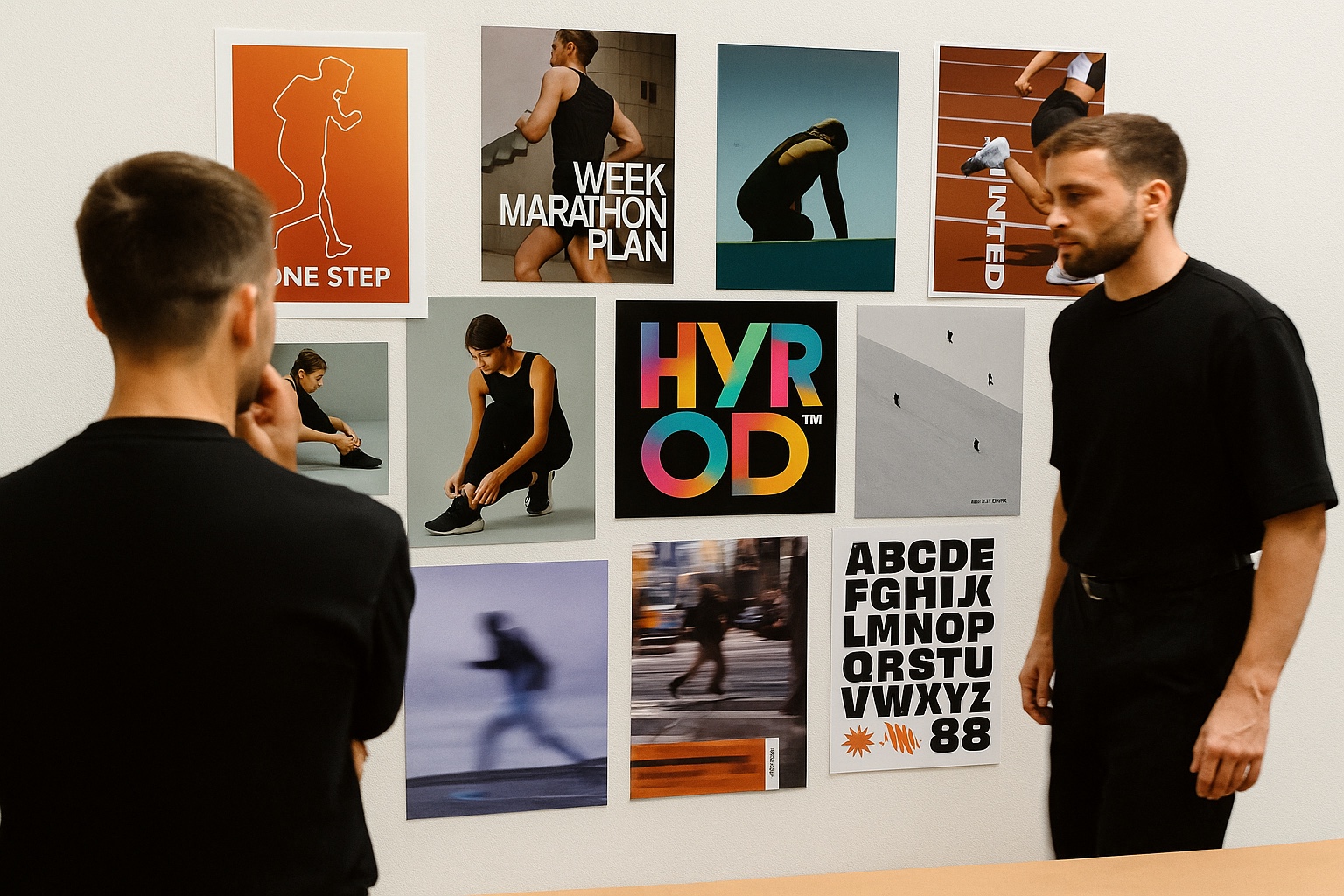Marketing in 2025: What’s Changed? Here’s Everything You Need to Know
Intro
The post–COVID world has cemented a new marketing reality. Online habits (e‑commerce, social, streaming) accelerated during lockdowns and have stuck around, but consumer time and budgets haven’t expanded proportionally. In fact, U.S. households report limited leftover income after essentials, even as ad choices and media subscriptions exploded. This overcrowded landscape means people are overwhelmed – digital fatigue is real, and roughly 70% of consumers have unsubscribed from brand lists after too many irrelevant messages.
At the same time, powerful new tools are reshaping marketing. AI-driven personalization can craft highly targeted campaigns, but poorly done mass-automation now feels generic or even spammy. Nearly 6 in 10 consumers trust brands that use AI to personalize content, but they still demand transparency and ethics around their data. Meanwhile, privacy changes (GDPR, CCPA and Google’s cookie phase-out) are forcing a shift from third-party targeting to first-party relationships. In short: 2025 favors authentic, value-driven marketing – community-building, owned audiences (email/SMS/newsletters), and content that speaks to real needs – over one-way ads and empty mass outreach.
Overall, winning brands in 2025 are those that embrace social-first, data-smart, experience-led marketing. They invest in consistent omni-channel presence and lean into creativity and genuine customer engagement, rather than spraying generic ads everywhere.
Top 10 Current Marketing Channels
- Influencer Marketing: Brands are partnering with niche creators to reach audiences with authentic voice and trust. Influencers’ content feels native (not interruptive), so consumers engage more – today agencies treat influencers as measurable channels, tracking links and conversions. With improved tools (UTM tracking, analytics), even mid-tier influencers can drive real ROI, especially among younger shoppers who tune out polished brand ads.
- Owned Content (Content Marketing): High-quality content remains a workhorse. Whether it’s blog posts, videos, podcasts, or guides, “owned” media builds authority and SEO value over time. Search engines now reward in-depth, original content that answers real questions, so companies focus on strategic, insight-rich storytelling (not mass-produced fluff). Good content also fuels other channels (it populates newsletters, social posts, ads), compounding returns.
- Community Platforms: Online communities (private Discord/Slack groups, Facebook Groups, branded forums, membership platforms, etc.) are thriving. Brands build “tribes” where fans connect with each other and the company. As Ogilvy notes, attention is fragmented and communities hold the keys – winning means co-creating with your fans. Engaged communities (from hobbyist forums to fitness fan clubs) yield high loyalty and organic word-of-mouth. They also generate UGC (user posts, reviews, photos) that powers trust.
- Retail Media Networks: Ads on retailer-owned platforms are exploding. Giants like Amazon Ads, Walmart Connect and Instacart Ads now let brands place highly measurable ads in the shopping journey. eMarketer forecasts US retail-media spend to jump strongly in 2025, driven by advertisers’ desire for “measurable sales” and privacy-compliant data right at purchase time. In practice, retail media means you can target shoppers on-site (e.g. Amazon product ads, Instacart sponsored listings) and get clear ROI on actual buys.
- TikTok & Short-Form Video: Bite-sized video is still king of engagement. TikTok (and Instagram Reels/YouTube Shorts) have become their own discovery/search channels. Short video content has ~30% ROI and breaks through busy feeds because it shows value instantly. Buyers can watch a 15-second demo, laugh at a brand’s skit, or click a native-shopping link without leaving the app. Creative, snackable stories on TikTok are driving trends, product launches and even direct sales (live shopping, in-app checkout) more than ever.
- Newsletters & Email: Despite all the hype around new channels, email remains one of the highest-ROI marketing channels. A well-segmented newsletter or targeted email campaign can yield returns in the dozens of dollars per $1 spent. With cookieless tracking looming, owning an email list is more valuable than ever – you control the channel. Modern brands use email for regular value-rich newsletters, abandoned-cart reminders, product tips and VIP offers. Advanced personalization and automation ensure relevance, making email a powerhouse for retention and cross-sell.
- SMS/Text Marketing: Text messaging cuts through the noise with staggering open rates (about 98%). Consumers willingly opt in for timely updates: half of people say they find brand SMS useful, and 90% of texts are read within 3 minutes. This makes SMS one of the most effective direct-response channels. Brands send flash-sale alerts, delivery updates, loyalty rewards or appointment reminders via SMS and see huge engagement because everyone checks their texts.
- Events (Live & Virtual): In-person and virtual events are staging a comeback. Webinars, pop-up shops, conferences and exclusive brand experiences create personal connections that digital ads can’t. “Digital fatigue is real,” notes one agency, so audiences now crave meaningful, personalized interactions – something an event uniquely delivers. A well-run event can spark social buzz, press coverage and new leads. Brands often build events into omni-channel campaigns (invitations via email, teasers on social, recap content online) to maximize impact.
- SEO (Search & Organic): Organic search traffic is still free, sustainable growth. Roughly 93% of online experiences begin with a search, and a smart SEO strategy yields long-term ROI (~700%+ on investment). In 2025, success means going beyond keywords: we focus on topic authority, quality site experience and real user engagement. Content and UX improvements (fast pages, helpful writing, internal links) keep SEO at the top, since Google’s algorithms increasingly favor deep, original content that satisfies intent.
- User-Generated Content (UGC): Leveraging your customers’ own content is more powerful than ever. Encouraging fans to post photos, videos, reviews or TikTok unboxings creates authentic social proof. Brands amplify UGC in ads and on their channels – it’s essentially free promotion. For instance, Lululemon highlights real customers’ stories on Instagram rather than pushing product shots. Similarly, solicited reviews and customer-submitted videos drive trust (a Harvard study found word-of-mouth/UCG is 10× more impactful than traditional ads). In short, user content turns buyers into brand ambassadors, feeding a virtuous cycle of awareness and trust.
5 Marketing Types That Are Fading
- Third-Party Cookie Targeting: The old days of blasting ads using third-party audience data are ending. With browsers phasing out cookies, brands can no longer rely on “spray-and-pray” tracking. Agencies note this shift puts pressure on brands to build first-party relationships (email lists, communities) and meaningful one-on-one marketing instead.
- Static Banner Ads: Traditional display banners have become largely invisible. Click-through rates on generic web banners hover around a meager 0.05% (about 5 clicks per 10,000 impressions). Most savvy consumers block them or simply ignore them. Instead of static graphics, marketers now favor richer media (video/interactive ads) and platform-native formats that don’t trigger ad-blockers.
- Untargeted Email Blasts: Generic mass email campaigns without personalization are dying. Modern inboxes and AI-powered filters flag impersonal “blast” messages as spam. People quickly unsubscribe if messages don’t address their interests. Today’s email best practice is targeted segmentation and personalization – anything else is considered junk mail.
- “One-Size-Fits-All” Social Spam: Chasing every single social media trend or hashtag without relevance is falling flat. Brands that mindlessly mimic viral memes (e.g. forced TikTok dances) appear inauthentic. Likewise, brands that post the same broad promotional message on every platform lose engagement. Audiences expect social content to feel native to each channel, not recycled ads.
- Overreliance on Undifferentiated Ads: Simply pouring budget into untargeted paid ads is yielding diminishing returns. As one marketer warns, “throwing money at ads without strategy doesn’t cut it”. High ad spend with poor targeting or testing will likely fail ROI. This is especially true as ad costs rise; savvy brands now combine ads with organic strategies (like content and SEO) rather than running generic paid campaigns.
Examples of 3 Standout Brands
- Lululemon (Lifestyle):
- Community-First: Lululemon turns stores into local fitness hubs – hosting free yoga classes, running clubs, and wellness events. They partner with local instructors (ambassadors), not celebrities, so customers feel like insiders. This grassroots approach creates fanatical loyalty and word-of-mouth buzz.
- Premium & Exclusive: By rarely discounting and releasing limited-edition drops, Lululemon maintains a high-end aura. Customers line up for new colors because scarcity makes items feel special. This aspirational positioning (activewear as a fashion/lifestyle choice) lets Lululemon command premium prices.
- Social UGC & Storytelling: On Instagram and TikTok, Lululemon’s feed is full of real customer stories and workout tips, not hard promotions. They actively encourage users to share their own fitness journeys (UGC), turning customers into content creators and peer marketers.
- Micro-Influencer Advocates: Instead of big celebrity ads, Lululemon invests in long-term relationships with authentic fitness gurus and wellness influencers. These relatable ambassadors wear the gear in their everyday lives – which resonates more than a glitzy ad.
- Lifestyle Branding: Lululemon sells a wellness movement, not just leggings. Their marketing paints a picture of a healthy, balanced lifestyle (mindfulness, community, style), creating emotional attachment. This focus on “selling the dream” keeps the brand growing in a crowded market.
- Community-First: Lululemon turns stores into local fitness hubs – hosting free yoga classes, running clubs, and wellness events. They partner with local instructors (ambassadors), not celebrities, so customers feel like insiders. This grassroots approach creates fanatical loyalty and word-of-mouth buzz.
- Peloton (Fitness/Consumer):
- Thriving Community: Peloton built an engaged subscriber base (over 3.1 million members, with retention around 96%). Interactive live and on-demand classes turn exercise into a social experience – riders see and cheer for each other in app and share accomplishments on social. This sense of belonging drives stickiness that few hardware brands achieve.
- Content-First Fitness: Their marketing is content marketing in action. Peloton regularly pushes out inspiring videos, success stories, and free workout clips that sell the lifestyle of home fitness. Instead of just ads, they “sell happiness” – people buying a healthier routine with world-class instructors.
- Integrated Sales Model: Peloton treats its bike/treadmill plus subscription as one combined product. Marketing clearly communicates the value: it’s not just pricey equipment, it’s a whole connected gym at home. Bundling hardware with endless classes differentiates them from a commodity bike.
- Tech-Driven Personalization: Behind the scenes, Peloton uses user data to personalize the experience (recommend workouts based on past classes, tailor promotions to your interests). This data-backed approach (and its snazzy app) resonates with a tech-savvy fitness crowd.
- Omnichannel Buzz: Peloton’s presence spans Instagram, sponsored podcasts, TV ads and community forums. They use multi-channel storytelling (e.g. featuring real riders’ journeys in ads) to reinforce the brand’s aspirational vibe. All touchpoints consistently showcase energy, music, and community.
- Thriving Community: Peloton built an engaged subscriber base (over 3.1 million members, with retention around 96%). Interactive live and on-demand classes turn exercise into a social experience – riders see and cheer for each other in app and share accomplishments on social. This sense of belonging drives stickiness that few hardware brands achieve.
- Airbnb (Travel/Tech):
- Belonging & Storytelling: Airbnb’s slogan “Belong Anywhere” isn’t just marketing fluff – it underpins everything. Listings highlight personal stories and unique spaces (treehouses, tiny homes, art-lofts) rather than generic hotel rooms. By focusing on authentic local experiences, Airbnb taps into travelers’ yearning for real connection and adventure.
- Trust Through Community: Reviews and verified host profiles are central to Airbnb’s marketing. They showcase guest photos and testimonials everywhere, building social proof. The seamless UX (clean site, easy booking, verified payments) and transparent review system foster trust. This credibility lets customers book unconventional stays without fear.
- Personalized Inspiration: Airbnb uses data to recommend homes and experiences tailored to your interests. Every marketing email or in-app suggestion is based on past searches and ratings, making the travel planning feel customized. They even introduced “Experiences” (local tours, cooking classes, events) to turn vacation planning into a personalized journey.
- 24/7 Travel Companion: Looking forward, Airbnb is evolving into an all-in-one lifestyle app. Its “Experiences 2.0” program aims to make Airbnb part of daily life by offering activities in your area year-round. This shift – from once-in-a-while booking site to everyday travel companion – is a bold marketing story in itself.
- Influencer & Partnership Buzz: Airbnb often collaborates with travel influencers and celebrities to showcase aspirational stays (think celebs in idyllic villas). These partnerships generate excitement and social media content. By highlighting real hosts and experiences through influencers, they extend reach while staying on-brand as an authentic marketplace.
- Belonging & Storytelling: Airbnb’s slogan “Belong Anywhere” isn’t just marketing fluff – it underpins everything. Listings highlight personal stories and unique spaces (treehouses, tiny homes, art-lofts) rather than generic hotel rooms. By focusing on authentic local experiences, Airbnb taps into travelers’ yearning for real connection and adventure.
Crafting Your Own Strategy
In 2025, founders should focus on meaningful relationships rather than broad reach. Build first-party audiences through email/newsletters, SMS and community platforms, since you fully control those channels. Make personalization the baseline – tailor messages to what customers actually want, but don’t overload them. (Remember: 70% of people unfollow brands that spam them.) Use AI to assist, not replace, genuine human insight. For example, leverage analytics to segment customers and automate routine tasks, but always add a personal or creative touch.
Also, think omni-channel from the start: plan campaigns that coordinate across social, web, and in-person touchpoints. This means aligning brand voice, visuals and timing everywhere. For instance, a product launch might include a TikTok teaser, email countdown, paid social ads, and an in-store pop-up — all echoing the same core message. Finally, commit to testing and measurement. Track which channels actually drive sales (in an increasingly measurable world) and double down on what works. Prioritize ROI and customer lifetime value, not just vanity metrics. In practice, that means investing in the high-return channels and content (e.g. email series, valuable blog posts) that build loyalty over time.
Top 5 Channels by ROI
- Email/Newsletters: Still #1 for ROI. Industry research shows email can return $36–40 for every $1 spent. With such outsized returns, brands treat email as a core customer asset. Consistent, well-timed emails (welcome series, cart reminders, loyalty offers) reliably drive engagement and conversions.
- SEO (Organic Search): Also huge ROI. About 29% of marketers say organic search gives them the best ROI of any channel. A solid SEO/content strategy can yield 700–750%+ ROI because it delivers ongoing traffic at little additional cost. In practice, this means creating evergreen, optimized content and earning backlinks so that your site ranks for high-value queries.
- Social Media (Instagram, Facebook): Among social platforms, Instagram often offers the highest ROI (25% of surveyed marketers rank it #). Facebook remains strong too with advanced targeting and commerce features. The best social strategies blend paid and organic: e.g. brands run shoppable posts and stories on Instagram while fueling them with fresh UGC. These channels pay off because they target active buyers in the discovery phase.
- Short-Form Video (TikTok/Reels): Short videos have proven ROI well above static content. Recent data shows short-form ads and content returning 30%+ on investment, thanks to their engagement power. TikTok’s algorithm can push a clever clip to millions of eyes quickly, making it a conversion engine for youthful demographics. Brands succeed here by using sharp, entertaining videos (often UGC-style) that highlight products or values in seconds.
- SMS/Text: With open rates around 98%, text messaging practically guarantees your message gets seen. Even though SMS campaigns can be labor-intensive (requiring opt-in), the payoff is high. Many retailers report ROI in the tens of dollars per $1 for SMS blasts. Use SMS for time-sensitive promos (flash sales, limited offers) and key alerts – customers almost always read them, driving swift action.
Tips for a Great Omni-Channel Strategy
- Map and align the customer journey. Figure out your ideal purchase funnel (e.g. awareness → consideration → purchase) and match each stage to channels. Make sure every touchpoint (social ad, website, email, in-store) tells a coherent story. For example, a customer who saw your brand on Instagram should land on a site that looks familiar and then receive an email in the same style.
- Centralize your data. Use a CRM or dashboard that pulls in analytics from all channels. When social ad data, website traffic and email lists live together, you can spot which channels drive action and double down. This also helps with personalization: if you know a user’s behavior on one channel, you can tailor messages on another (say, sending an SMS follow-up after an email click).
- Consistent branding & messaging. Keep visuals and voice uniform. Use the same logo, color scheme and brand tone everywhere. As one marketing guide notes, consistency “drives trust” – and trust drives sales. If your Instagram posts have a playful tone, your email and site copy should match that personality.
- Coordinate campaigns tightly. Rather than running one-off ads, plan multi-touch campaigns. For instance, launch a product with a synchronized push: a teaser on social, a hero email on launch day, sponsored content on a relevant blog, and an in-store demo if possible. Ensure that each channel’s content reinforces the others. Tools like shared editorial calendars or cross-channel promotion plans can help.
- Test, learn, and adjust. An omni-channel strategy isn’t static. Continuously measure what’s working (using UTMs, promo codes, cross-channel attribution) and refine. If TikTok ads outperform Instagram Stories for your brand, shift budget accordingly. The advantage of an omni approach is flexibility – it lets you “spot shifts early” and reallocate resources to the best-performing channels. Always iterate based on data.
Final Thoughts
Marketing in 2025 rewards clarity, creativity, and connection. It’s not about doing everything—it’s about doing the right things consistently across the channels that matter. The best brands are the ones who stay true to their voice, build real community, and execute smart, adaptable strategies that evolve with their audience. Whether you're building a lifestyle brand, scaling a fitness product, or leading a consumer company into its next phase, now is the time to refine your approach and focus on what actually drives impact.
Need a clear, modern marketing strategy that connects? At Studio Wisdom, we help ambitious founders and brand leaders craft strategies that align vision with execution—across identity, content, digital, and beyond. If you're ready to build a brand that performs across every channel, we’re here to help. Let’s make marketing feel meaningful (and effective) again.


Ready to build your brand?









.avif)
